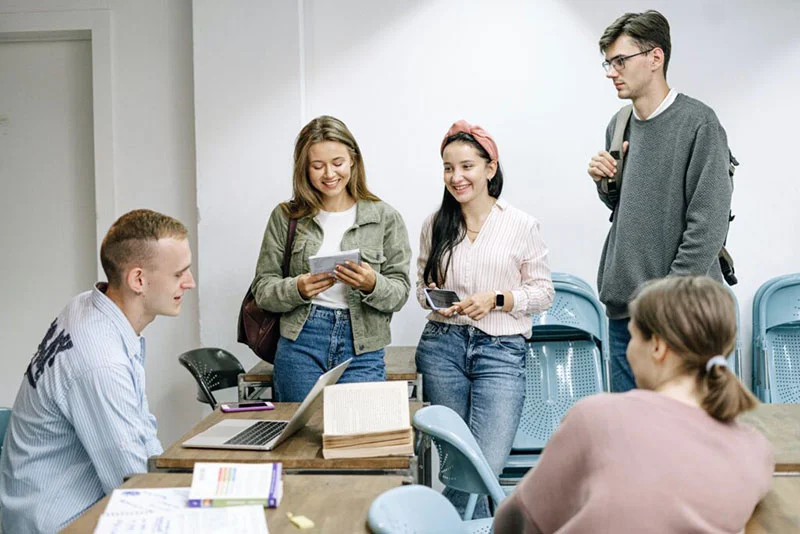When it comes to community translations, why is it so important for an organisation to improve its online accessibility first? Because your website is a great place to make translated information available to people from CALD communities. But only if the website is easy to navigate and people from a CALD community can actually get to the translated information easily.
But it’s not just that. We must care about online accessibility for social justice and responsibility towards our community: we currently have the capacity to eliminate the barriers faced by people with disabilities. As Steve Ballmer (Microsoft) mentioned,
“Over the next 10 to 15 years, technology has the capacity to virtually eliminate barriers faced by people with disabilities…”
Here is the online accessibility business case: 18% of the global population experience some sort of disability, whether it is temporary or permanent. Do you really want to exclude such a huge chunk of the community from accessing your website?
Do you want to be part of the problem or part of the solution?
By making our information more accessible, is it going to be less effective for mainstream Australians?
With the proper training and understanding, you can fulfill every accessibility success criterion with techniques that will either have no effect on the mainstream community or improve the experience for everyone, including people from CALD communities. Because when we design for the extremes, everyone benefits!
And here goes another question: Why spend so much money and resources on community translations… if a good part of the community won’t be able to access it?
Understanding the Basics of Online Accessibility
Online accessibility means making websites and digital content usable for people with disabilities. It involves removing barriers so that everyone can access and interact with information online. Here are the basics:
- Types of Disabilities: Understand that people have different disabilities, like vision or hearing impairments, physical disabilities, or cognitive challenges. Each disability requires specific accommodations.
- Web Content Accessibility Guidelines (WCAG): Follow these guidelines to create accessible web content. They provide standards for things like providing text alternatives for images and videos, making websites navigable by keyboard, and using clear language.
- Make Content Perceivable: Ensure that everyone can perceive your content. Provide text descriptions for images, videos, and audio. Allow users to customize how they see content.
- Make Content Operable: Design websites that are easy to use. Enable keyboard navigation so people can use the keyboard instead of a mouse. Support assistive devices.
- Make Content Understandable: Use clear language and organize information logically. Provide instructions and feedback that are easy to understand.
- Ensure Compatibility: Make sure your website works with different browsers and assistive technologies. This lets users access content with their preferred tools.
- Test and Evaluate: Regularly test your website for accessibility using automated tools and manual checks. Get feedback from people with disabilities to find and fix any issues.
- Training and Awareness: Train your team on accessibility best practices. Increase awareness within your organization to make accessibility a priority.
- Continuous Improvement: Accessibility is an ongoing process. Keep improving your website’s accessibility features based on feedback and changes in technology.
By understanding and implementing these basics, you can make your website more inclusive and accessible to all users, regardless of their abilities.
Considering plain language, Easy English and community translations will increase the accessibility of your organisation’s communications.
What is community translations?
In Australia, we use community translations to communicate with people from CALD communities.
Community translations is a type of professional, NAATI certified translation provided by government or health/community services for local communities who speak a language other than English.
If you are trying to communicate with Australian refugee, asylum seeker or migrant communities, you need to use community translations.
What is so special about community translations?
Accessibility and cultural appropriateness are the main focus on community translations. In Australia, it’s important that community translations are done by NAATI certified translators.
The Importance of Cultural Appropriateness in Community Translations
Cultural appropriateness is really important in community translations, especially when talking to people from different cultures. Here’s why it matters:
- Effective Communication: Cultural appropriateness helps the translated content connect with the people it’s meant for. It considers their culture and makes the information easier to understand. This helps the translations share the right message and engage the community.
- Respect and Inclusion: Cultural appropriateness shows respect for different cultures. It values each community and makes them feel included. When translations respect their culture, it shows that the organization cares about their needs.
- Building Trust: People trust information that respects their culture. Cultural appropriateness helps organizations build trust with the community. It shows that the organization understands their perspective and provides relevant information.
- Avoiding Misunderstandings: Without cultural appropriateness, translations can be misunderstood or cause offense. Different cultures have different ways of saying things. Cultural appropriateness reduces the risk of misunderstandings or using language that could be disrespectful.
- Access to Important Services: Community translations help people access important services like healthcare or government support. Cultural appropriateness ensures they can understand and use these services, making things easier for them.
- Empowerment: Culturally appropriate translations empower the community. They provide information in their language and respect their culture. This encourages their participation and helps them make informed decisions.
To achieve cultural appropriateness, it’s important to work with translators who understand both cultures. Involving community members can also make the translations more accurate and culturally appropriate.
By prioritizing cultural appropriateness in community translations, organizations can improve communication, include everyone, and build trust with the community.
Contact us today if you need any of the following services or all of them!
Community translations, plain English editing, Easy English (EasyRead), Chinese translations, Arabic translations, plain language translations, Spanish translations, Italian translations, Greek translations, French translations, Hindi translations, Vietnamese translations, Korean translations, Japanese translations…and any other language!
Related Posts

Get a quote today
"*" indicates required fields
Subscribe today to receive the latest insights and updates from Sylaba Translations









